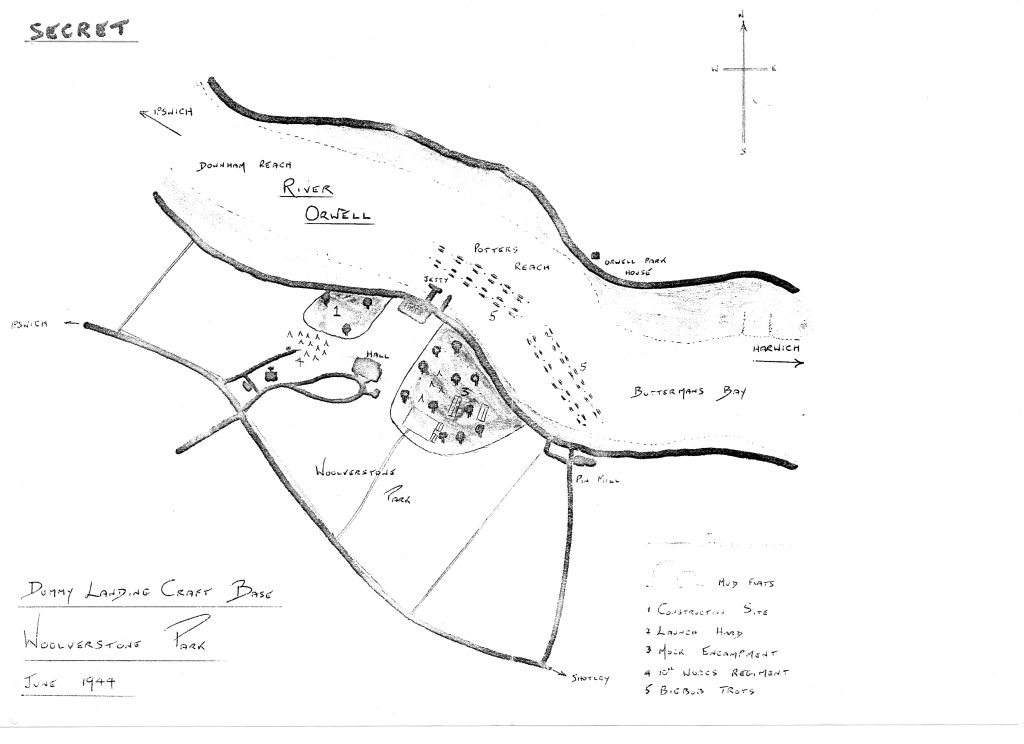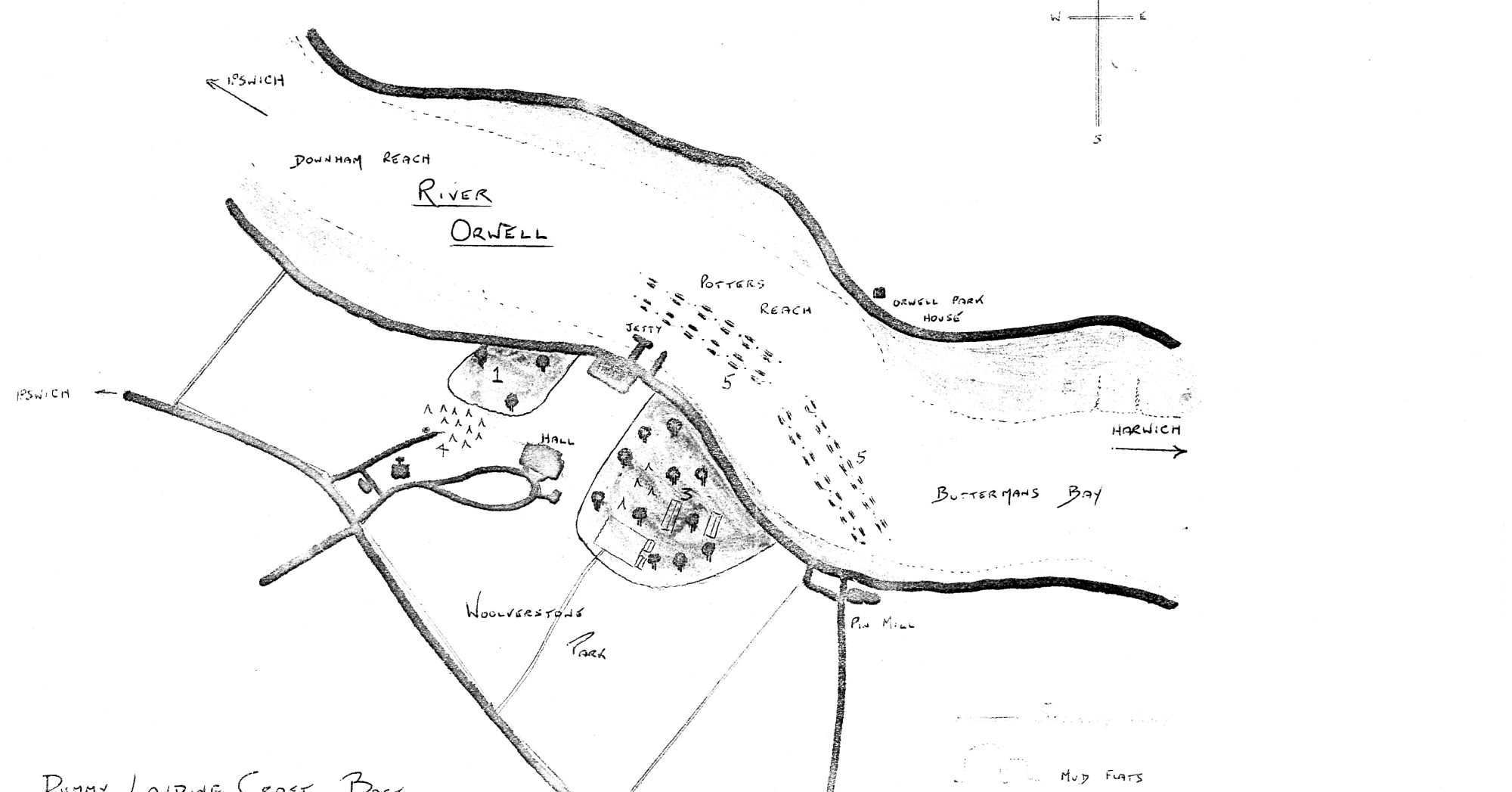There is a full account of this topic at Woolverstone, D-Day at 80 Exhibition.
This RAF photograph, 26th March 1944 – 3054 – shows what must be real landing craft near Woolverstone on the River Orwell. There are thirty-five of what appear to be MkV landing craft tank (LCT) and, perhaps, six of the considerably larger MkIV LCT. A number of identified vessels are inshore. Click here for photo 3054 if the space below is blank.
RAF photograph, 26th March 1944 – 3054. There are two levels of zoom on the photograph on most browsers.
The Book, Operation Quicksilver, by Peter Tooley, 1988 describes the construction of a dummy invasion fleet as part of a deception plan for D-Day. He was the naval officer responsible for building the dummy craft at Woolverstone on the Orwell in Suffolk and produced this sketch of the site and moorings:

The RAF photograph below, 6th July 1944 – 3052 – shows 39 MkV craft, these would be the dummies that had been built in May and June. Others would be moored in areas adjoining the image. They were left in place after D-Day to persuade the enemy that the main invasion was yet to begin. As this was July the real craft from the March photo would have sailed to Normandy in June. Click here for photo 3052 if the space below is blank. The plan was to deploy seventy dummy LCTs on the Orwell although it seems that only sixty three were completed.
RAF photograph 6th July 1944 – 3052. There are two levels of zoom on the photograph on most browsers.
Photo 3049 also 6th July has no landing craft nor does 4089 on the same day.
There was an incident on the Orwell regarding the deception: at night, nothing on the river was lit as it was wartime; when a sailing barge collided with a Wetbob (an inflatable type of dummy landing craft), it became obvious to the crew that the vessel was fake. Consequently, the skipper and crew were detained by police until D-Day1Wetbob collision according to Joshua Levine, Operation Fortitude: The True Story of the Key Spy Operation of WWII That Saved D-Day (HarperCollins UK, 2011) 2Not, apparently, a Bigbob,This is the only mention found of the inflatable Wetbobs being deployed in the area..
See Dummy D-Day Fleet on the Deben for more of the story.
- 1Wetbob collision according to Joshua Levine, Operation Fortitude: The True Story of the Key Spy Operation of WWII That Saved D-Day (HarperCollins UK, 2011)
- 2Not, apparently, a Bigbob,This is the only mention found of the inflatable Wetbobs being deployed in the area.
